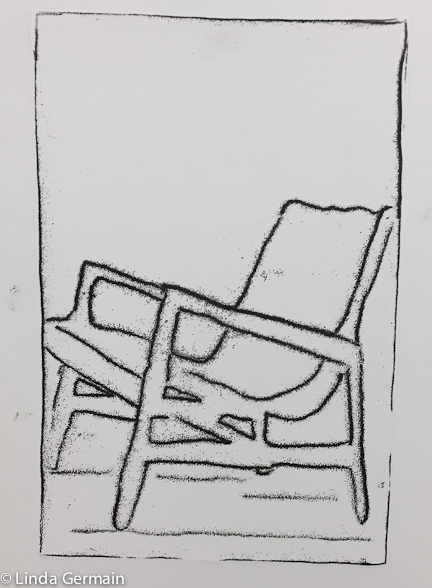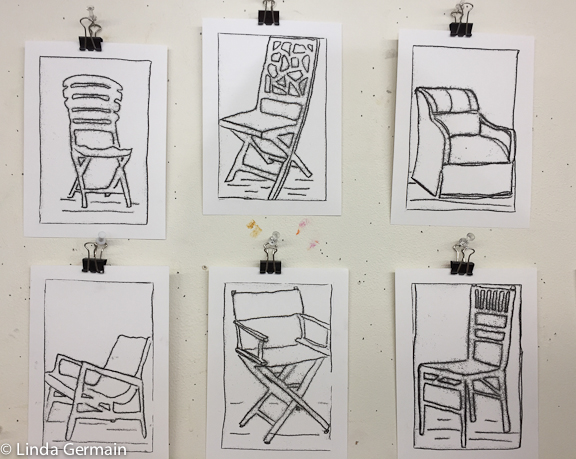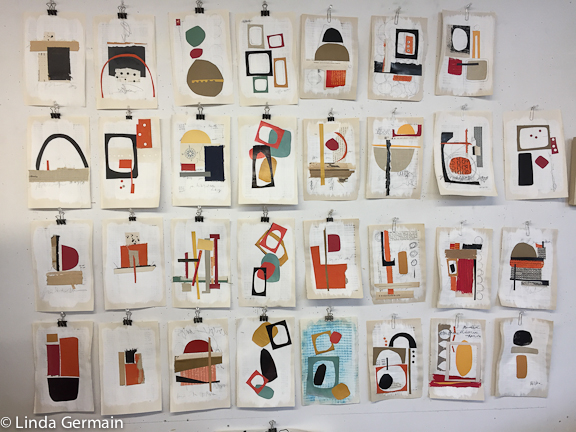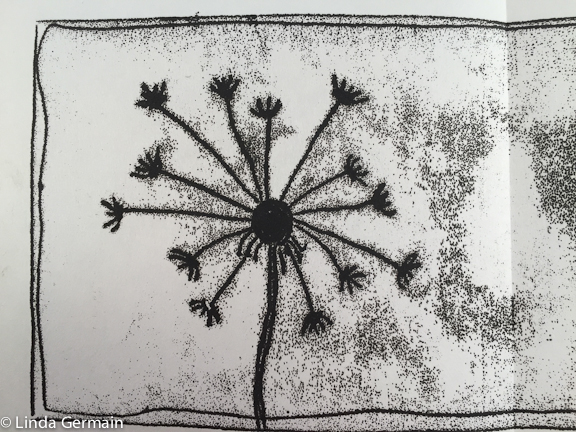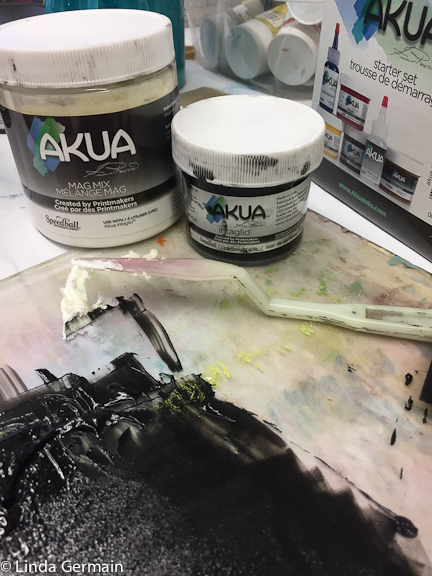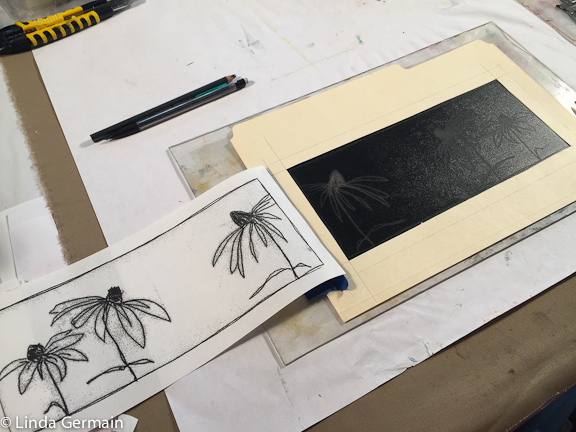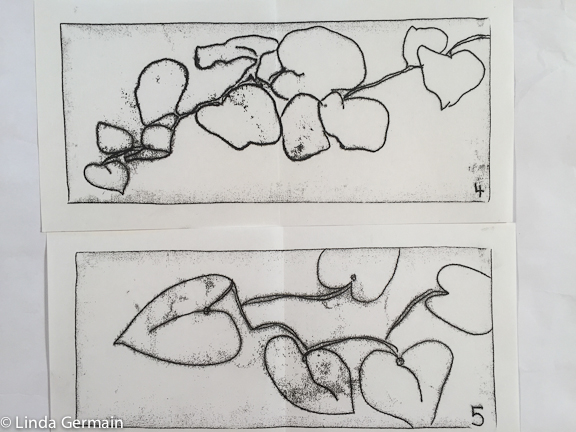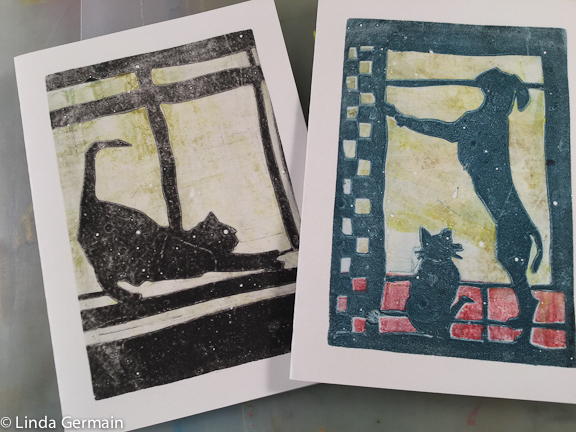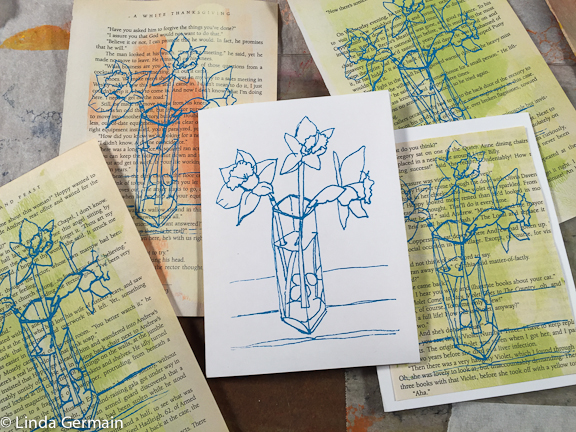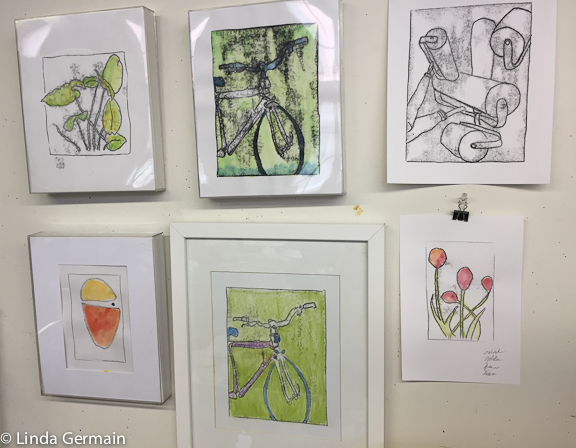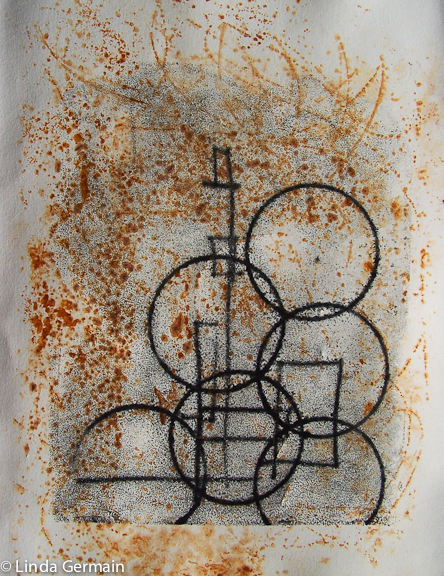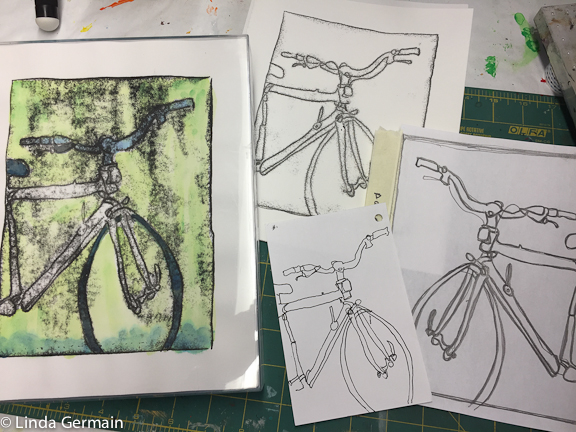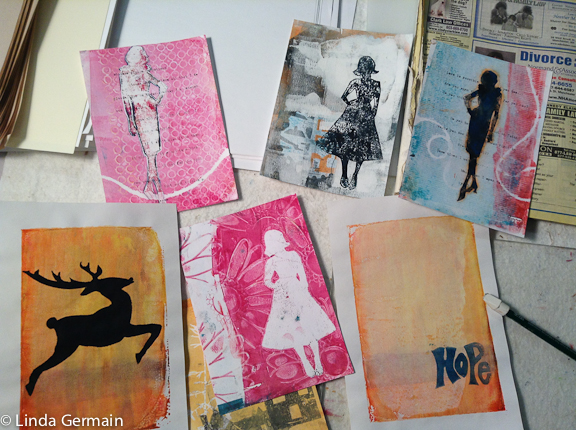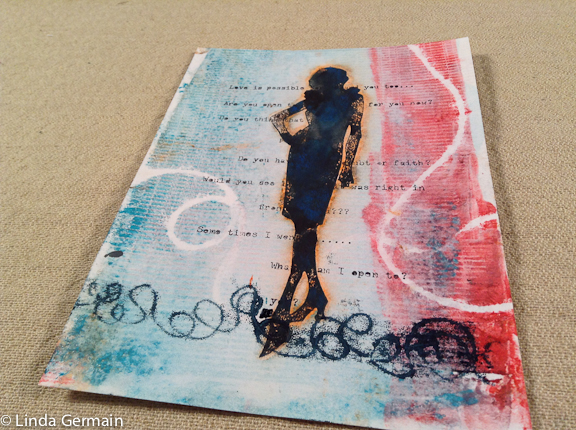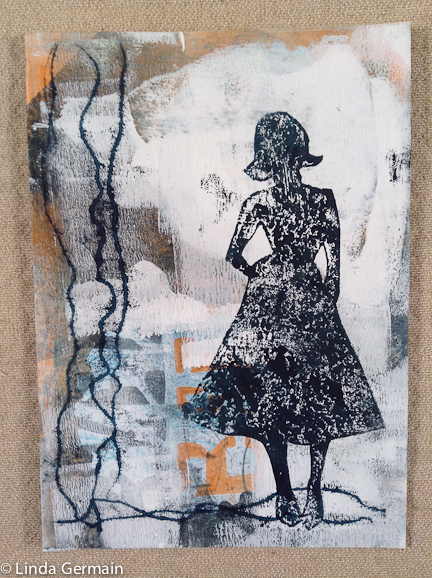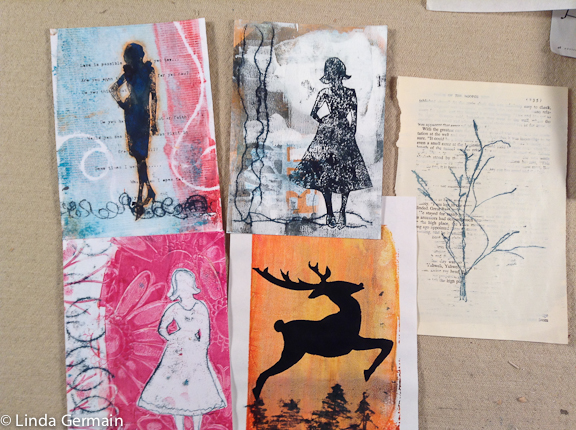Working small can lead to big things
It can be overwhelming to getting started with a new series or art project. One way to ease into a new project it to work small and do a little something each day.
I like working 5″ x 7″. It is small enough to complete quickly and a standard size that can easily be framed up to 8″ x 10″
An in a very short time I can have a collection of drawings, prints or collages for my studio wall.
Consider doing a few small works in one day to get yourself psyched up to continue the “daily doing.”
Three tips on making small art everyday:
- Use supplies that are easy and accessible to you quickly. Minimize prep time and clean up time. That is why daily drawing is so popular, all you need is pen and paper. But if you are printmaker or collage artist or fiber artist find ways to leaves supplies out and ready, so you can quickly make your small daily piece.
- Hang up your work. Admire it. Enjoy the growing collection. Try not to judge every little piece. If you give yourself time and space you will see your unique voice evolving and getting clearer.
- Keep it fun. Remember this is a practice to support you. If it turns into another chore to get done, then consider changing the subject or medium and get back to a bit of joyful creation.
If you would like to jumpstart a daily habit with some drawings and trace monoprinting, then
Get support from an online class. Check out the current offerings on the printmaking workshop page.
This is a great class to get playing with loose, expressive drawing and then easily transform those drawings into one of a kind, trace monoprints.
The “big things” that could happen from your “daily doings.”
- You may have body of work for a solo show
- You may have a stack of work to frame and sell or gift
- You may have new and stronger skills
- You may have become more aware of your unique expression
I think it is worth the try!
Working small can lead to big things Read More »
